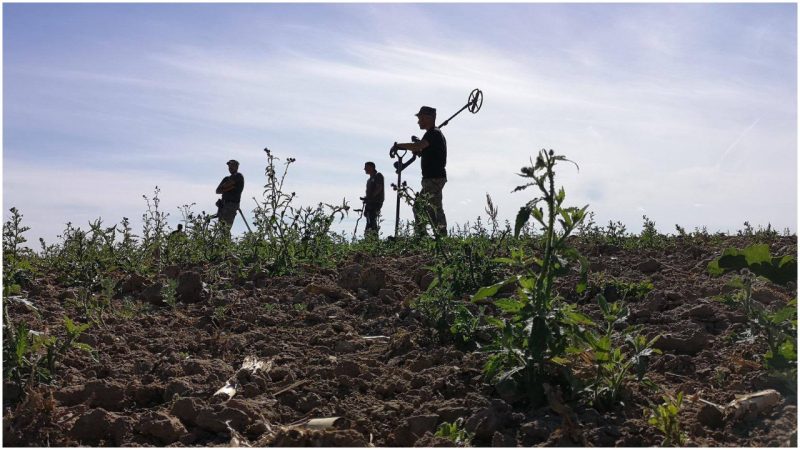I went into a beaten-up house to find a few rusty “Bouncing Betty” anti-personnel mines inside one of the doorways.
From overgrown trenches to abandoned homes: soldiers and the remnants of war lay scattered around us. Even today, it’s possible to walk into a forest, find a house destroyed in 1944/45, and discover soldiers lying there, forgotten by history.
NGO Legenda – Summer Expedition 2018
One particular place I frequently visit as a member of the NGO Legenda is in the so-called Kurland Kessel (Courland Pocket). Over the course of six major battles, the German Army defended the peninsula with the sea at their backs. The Red Army struggled to break this concentrated pocket of German forces.
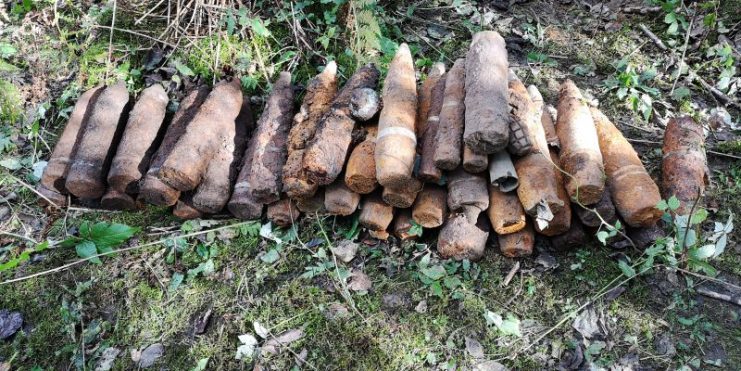
The dense forests and idyllic landscape of Courland witnessed horrific battles from 1944 through to the official capitulation of Germany in 1945. Today, Legenda are officially mandated with finding the missing.
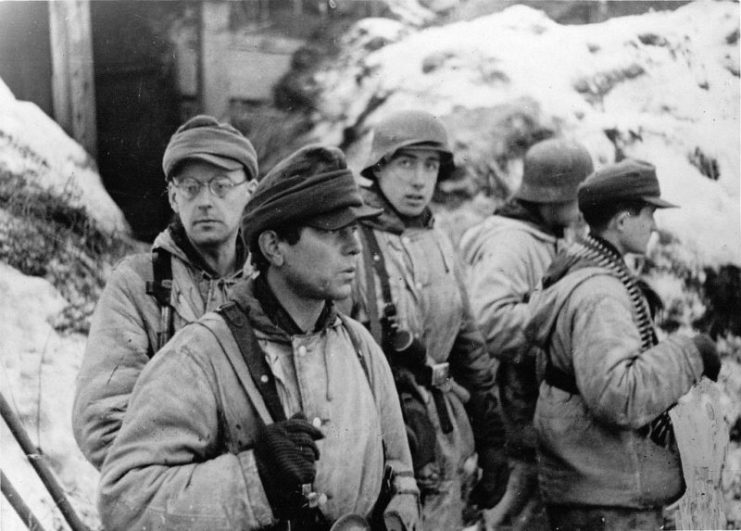
During the expedition briefing of each search, we are warned what to expect. This includes both standard protocol as well as the types of unexploded ordinance. We are instructed to mark items that need to be lifted by the Latvian Army disposal teams which work hand-in-hand with our NGO. These teams remove deadly items from former battlefields.
We are also told that for every single button, piece of equipment, or unusual item we come across, we should check the forest floor a few meters around it because there would likely be a soldier. The last time the area was checked, a soldier was located very close to the surface because of a small item that was uncovered.
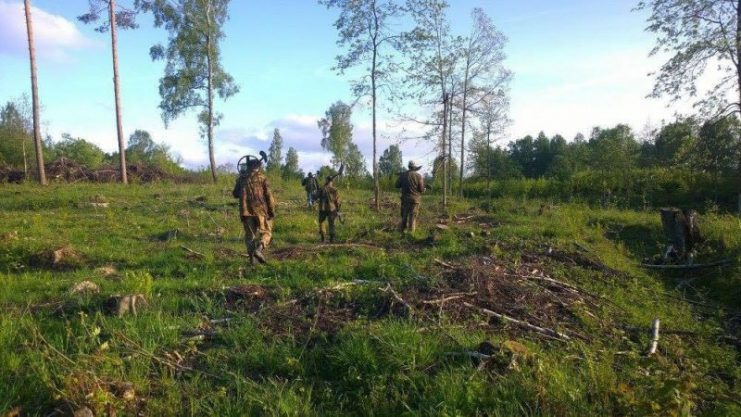
On one search, after about two hours of exploring, I went into a beaten-up house to find a few rusty “Bouncing Betty” anti-personnel mines inside one of the doorways. I decided to leave very quickly.
The roof had collapsed long ago, and debris was everywhere. That house was a silent witness to the hell that had rolled over these forests all those years ago. The relics lying all over the place were a stark reminder of normal life, I couldn’t help but wonder: if the war hadn’t happened, would there be a family inside?
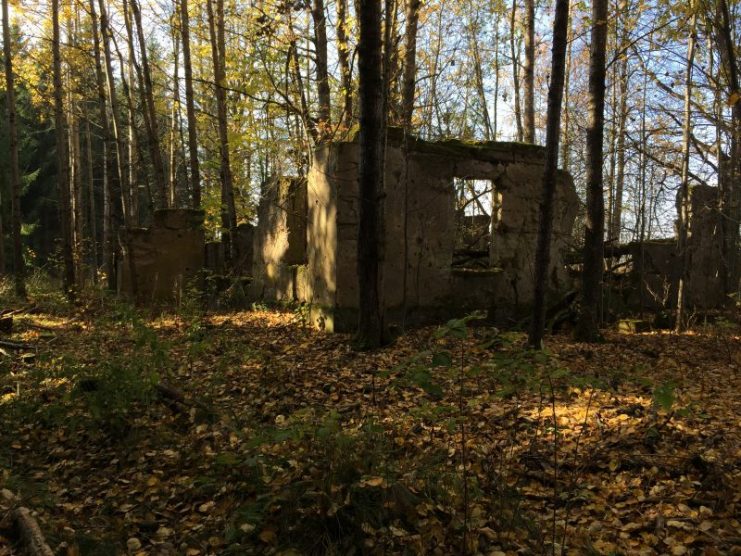
A few hours later, we opened a standard zigzag German trench a few hundred meters from the former farmhouse. We found the remains of some German soldiers. Heavy artillery had smashed their position. The mix of bones and equipment showed exactly what heavy artillery shelling could do.
One soldier’s equipment, such as his mess tin, water bottle, and spade, were full of holes and twisted by the shrapnel. After a few hours of careful searching, we uncovered what seemed to be all of him. His remains lay stooped over his equipment, just as he fell in the winter of 1944/1945.
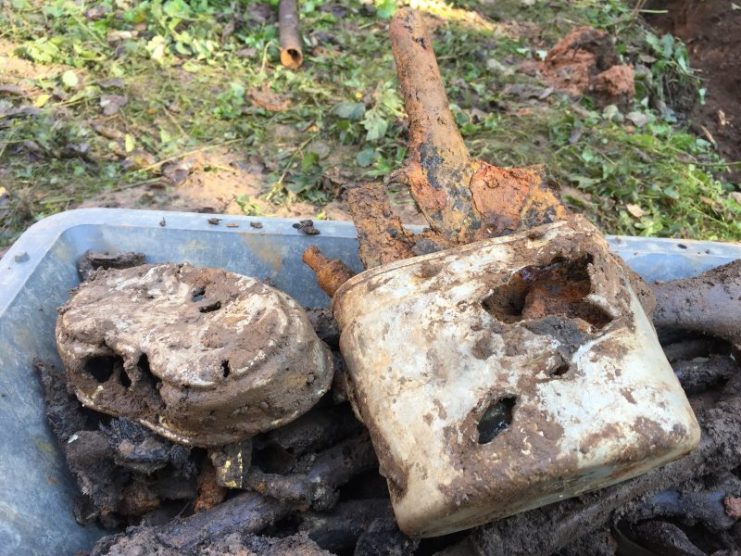
After carefully searching the trench, ammo and grenades were uncovered. These were carefully moved away for the Latvian Army disposal teams to deal with.
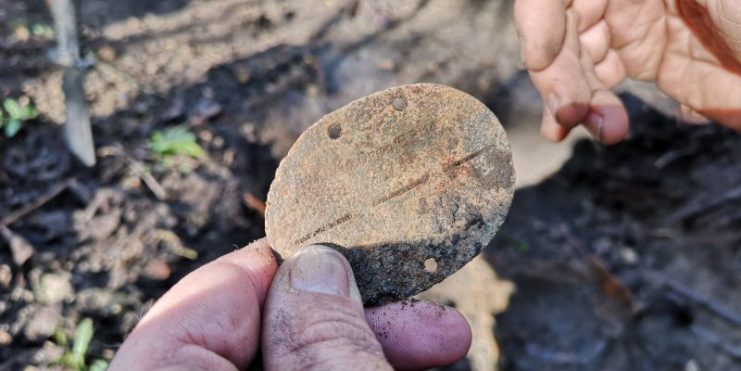
Among the debris lay a small oval disk, a German ID-Tag belonging to the man we just found. It’s moments like that where we all pause and smile at each other. The human we had just found now had his identity back.
There could now be a named gravestone in a military cemetery. Perhaps a loved one would get a letter from the German authorities. Moments like that are why spend hours walking, digging, and searching the long-forgotten forests.
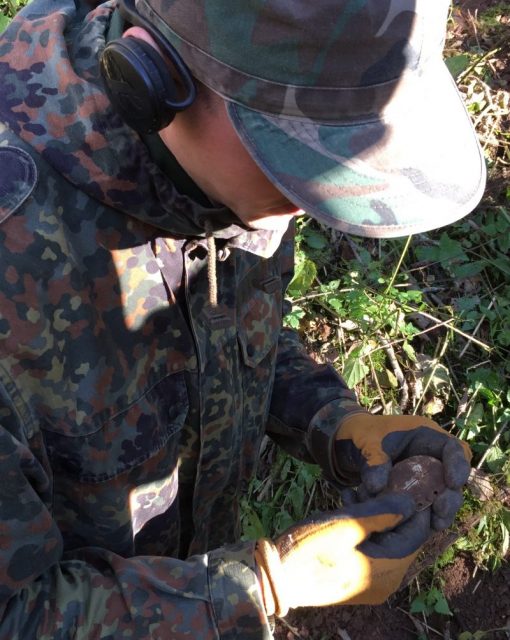
On the same day, 150 meters from the farmhouse, we also found a young German soldier in his foxhole. He had a rifle by his side and the bolt was open. Likely he was reloading when he was hit. With a stick grenade on his belt and his helmet beside him, he was facing the farmhouse.
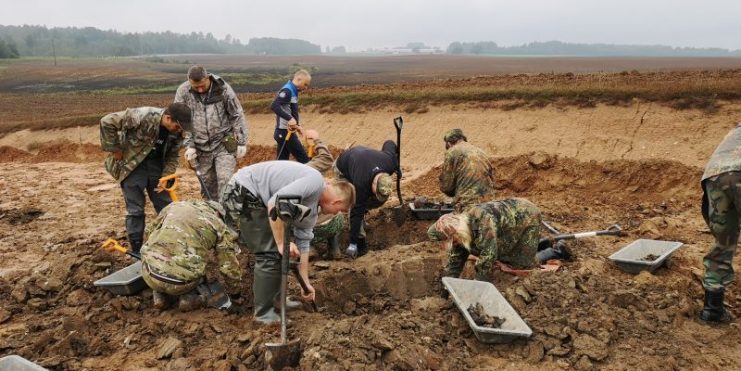
His cap still bore his divisional insignia: a piece of metal in the shape of a mushroom, designating the 205th Infantry Division. The Division had fought in all six of the battles of Courland and finally capitulated on the peninsula in May 1945. We were able to recover a tag on his body, so he, too, will find a suitable resting place.
About 150 meters away in the opposite direction was a water well at the rear of the farm house. Inside, we found a few Soviet soldiers. Maybe they were thrown down after the battle, or maybe they were killed there, we will never know.
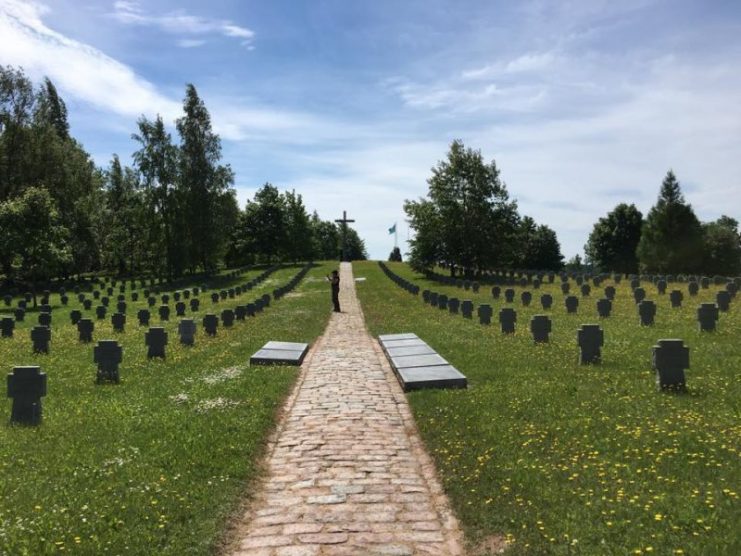
On one of the soldiers, we found a small religious medallion. It had reminded me of a quote I once heard: “There are no atheists in foxholes.”
These men will also find a resting place in the local military cemetery.
The chaos of the battle that took place where we were standing was clearly evident, even around 74 years later. We found soldiers from both sides where they had fought and died, only a few hundred meters apart.
It is hard to ignore the horror behind it all, the senseless killing and dying. After all, each man that lay in the body bags nearby had been some mother’s son at one point.
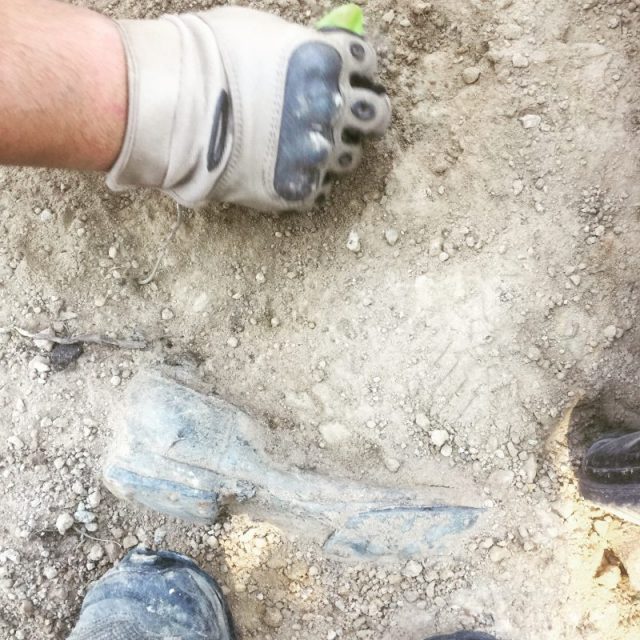
Moments I won’t forget…
I am often asked what the most special or memorable moments were. After uncovering a few hundred soldiers, it’s hard to remember each one and the small details associated with them.
I started out with a promise that I would try and remember each human we found, but it’s impossible. After a few expeditions, we were finding mass graves on the former frontline with hundreds of soldiers thrown down on top of each other like broken toys.
However, I will never forget one cold morning when we opened a trench line from WW1 outside Riga. The soldiers that lay there were a mix of Latvian Riflemen and standard Czarist soldiers who had fought there in 1917. The ground was pale sand, dry and cold.

We began to find soldiers lying where they fell. Some still had parts of the uniform wrapped around their bodies or their leather boots perfectly preserved. Some had small chemical bottles and rags which they used in place of masks in the event of a gas attack.
As I was brushing the sand away from one soldier, I noticed a pocket watch poking out. It was exposed to the light for the first time in almost 100 years. I opened it and observed the time when it had stopped ticking. Moments like that I will never forget.
Another expedition that stays in my mind was when we were digging up a Soviet airplane wreck, a Petljakow Pe-2. It had been shot down by a German fighter plane, the wreckage crashing into the thick forests below. One of the crew had managed to bail out, but the other two crew members perished and were officially recorded as lost.
Our mission was to confirm the aircraft number and try to recover any remains. I was knee-deep in wet mud and bent double. With my hands buried in the mud, I found one of the crew member’s side arms. It was a pistol that had been ripped apart and bent during the crash.
Around it I found small bones. Even all those years later, I could still see evidence of the destructive force of the plane hitting the ground. We hauled the wet mud out of the hole using the digger and the team sifted through it carefully.
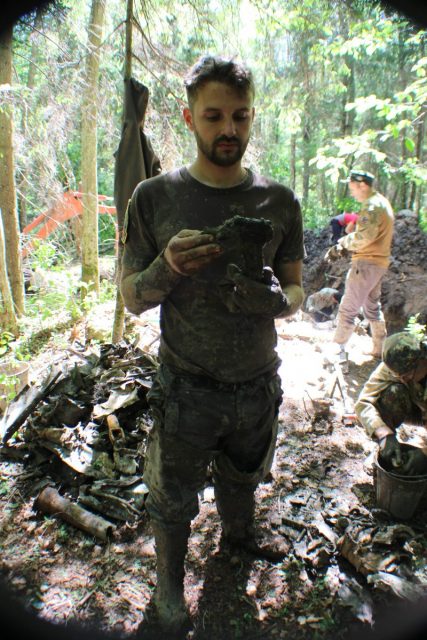
Eventually, we located a small part displaying the digits from the engine serial numbers we needed, so we knew to whom the remains belonged.
That night when I got back, I could hardly sleep. I had moved buckets and buckets of dirt and hundreds of pieces of twisted aircraft parts. The experience truly horrified and saddened me.
I personally found many parts of the crew. Consequently, I felt a strong sense of sadness for what they had been through, only to end up lost among the twisted wreckage deep in a forgotten forest far from home.
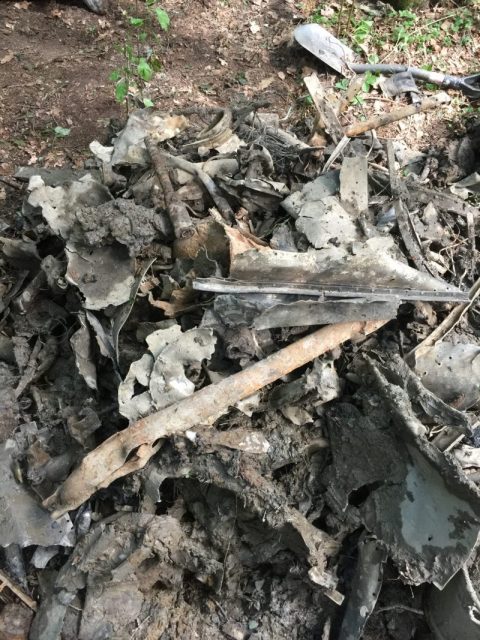
I could go on forever telling these stories because they mean so much to me. Like the title states: “war is hell.” Even after all those years, you can still feel the intensity and the destruction behind it.
I have often been asked why do I do this, why I go out and spend so much time walking in the forests. I don’t have a simple answer for that, but I truly believe that finding these men and woman, regardless of who they fought for, is a noble thing to do.
Nothing is more rewarding than, on a warm summer’s day, walking through the thousands of white crosses in a military cemetery with the knowledge that there are new plots with headstones where a human being has regained their identity and is no longer lost among wreckage or forgotten in a foxhole.
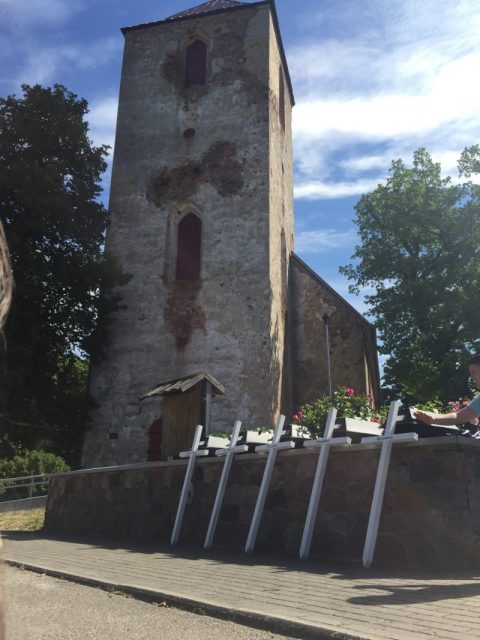
The same shovels that found them were used to lay them to rest, with dignity and respect. The church in the background bears scars from the fierce fighting in the area during the final stages of WW2 in Latvia. Photo: Jonny Bay, 2018.
Legenda are currently planning a large expedition in June. We will be covering it from live streams to articles throughout social media. We are also currently running a fundraiser to help cover some of the larger costs associated with our searches for the missing.
Follow us on Facebook Legenda.Diggers
Jonny Bay: History.Hunter.Official
All photos provided by the author.
